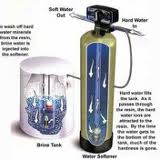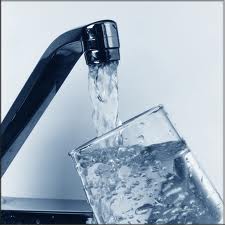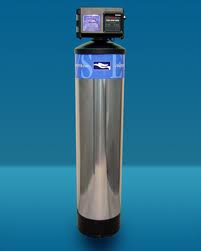Water Treatment Devices
Water treatment can be confusing.Many consumers have difficulty determining whether they actually need a water treatment system or they are not sure what type of water treatment system would be best for them. The choice regarding whether or not to install and use a water treatment system is up to you. If you have identified a specific contaminant whose presence in your water is causing you concern, you can use the drinking water treatment units online product database to try to locate products that have been certified to reduce that specific contaminant.
 Consumers are encouraged to educate themselves about the quality of their current drinking water supply. By attempting to identify the contaminants that are present in your water supply, you can then ensure that you are selecting a water treatment system that will be capable of treating those specific contaminants.
Consumers are encouraged to educate themselves about the quality of their current drinking water supply. By attempting to identify the contaminants that are present in your water supply, you can then ensure that you are selecting a water treatment system that will be capable of treating those specific contaminants.
It is important to keep in mind that all home water treatment devices need regular maintenance to operate effectively. Please read the operating manual that comes with your water treatment system to ensure you are operating your system in accordance with the manufacturer’s directions. Filter cartridges should be changed on a regular basis as recommended by the manufacturer.
Water Treatment Technologies
The water treatment products on the market today utilize many different technologies. NSF currently evaluates residential water treatment products that utilize one of the technologies listed below. The applicable NSF/ANSI standard that applies to each technology is shown in parentheses.
| Technology | Description of Product Technology |
|---|---|
| Filtration (NSF/ANSI 42 & 53) |
This is the physical process that occurs when liquids, gases, dissolved or suspended matter adhere to the surface of, or in the pores of, an adsorbent medium. Carbon filters use this technology to filter water. |
| Softeners (NSF/ANSI 44) |
Water softening devices covered by Standard 44 use a cation exchange resin, regenerated with sodium chloride or potassium chloride, to reduce the amount of hardness (calcium, magnesium) in the water. The hardness ions in the water are replaced with sodium or potassium ions. |
| Ultraviolet Treatment (NSF/ANSI 55) |
This treatment style uses ultraviolet light to disinfect water (Class A systems) or to reduce the amount of heterotrophic bacteria present in the water (Class B systems). |
| Reverse Osmosis (NSF/ANSI 58) |
A process that reverses, by the application of pressure, the flow of water in a natural process of osmosis so that water passes from a more concentrated solution to a more dilute solution through a semi-permeable membrane. Most reverse osmosis systems incorporate pre- and post-filters along with the membrane itself. |
| Distillers (NSF/ANSI 62) |
These systems heat water to the boiling point and then collect the water vapor as it condenses, leaving many of the contaminants behind, particularly the heavy metals. Some contaminants that convert readily into gases, such as volatile organic chemicals, may be carried over with the water vapor. |
Water Treatment Devices
 There are several styles of water treatment devices available on the market today. The most common styles are listed below, along with a brief description of each water treatment device.
There are several styles of water treatment devices available on the market today. The most common styles are listed below, along with a brief description of each water treatment device.
Point-of-Entry (POE) System
These systems typically treat most of the water entering a residence. Point-of-entry systems, or whole-house systems, are usually installed after the water meter. (Water meters are usually located in the basement of a house. In warm weather climates, the water meter may be in the garage or outside of the house.) A water softener is an example of a POE system.
Point-of-Use System
These water treatment systems typically treat water in batches and deliver water to a single tap, such as a kitchen sink faucet or an auxiliary faucet mounted next to the kitchen sink. The following information contains a brief explanation of different POU systems and points to consider when determining which style of a system will best suit your needs. The list is ordered from easiest installation/operation to more difficult or complex installation/operation and should not be construed as any type of recommendation.
| Personal Water Bottle | This type of product consists of a bottle and a filter. The filter may be integrated with the push/pull cap of the filter bottle or may be integrated with a straw. |
| Pour Through | In pour-through products, gravity causes water to drip through a pitcher, which is usually stored in the refrigerator. They typically have a lower capacity (i.e. can filter fewer gallons) than other types of systems. |
| Faucet Mount | This type of filter is mounted on an existing kitchen sink faucet (usually replacing the aerator or installed immediately before the aerator). A diverter is usually used to direct water through the system when treated drinking water is desired. |
| Counter-Top Manual Fill | This system is usually placed on a counter and filled by pouring water into the system and activating it for a batch of water. (A manual fill distiller is usually considered to be a Counter-Top Manual Fill.) |
| Counter-Top Connected to Sink Faucet | This product is usually placed on a counter and connected by tubing to an existing kitchen sink faucet. The treated water dispenses out of a return tube from the kitchen faucet, or the treated water is dispensed from a spout on the system. |
| Plumbed-In | This type of system is usually installed under the sink and requires a permanent connection to an existing water pipe. The filter water is dispensed through the existing sink faucet. |
| Plumbed-In to Separate Tap | This product installs in the same manner as plumbed-in systems (above). However, the filter water is dispensed through an auxiliary faucet mounted next to the kitchen sink. People who live in apartments may not want to drill a hole in the counter top. |
The Importance of Certification
 In the last decade, interest in home water treatment products has grown tremendously. Unfortunately, it isn’t always easy for consumers to know whether or not a particular product will actually be as safe and effective as the manufacturer claims at reducing various contaminants from your water supply.
In the last decade, interest in home water treatment products has grown tremendously. Unfortunately, it isn’t always easy for consumers to know whether or not a particular product will actually be as safe and effective as the manufacturer claims at reducing various contaminants from your water supply.
NSF has a long history of developing and running independent product testing programs. In fact, we are the leading independent tester of home water treatment products on the market today. With our state-of-the-art laboratories and highly skilled staff, we have the knowledge and expertise to effectively evaluate water treatment products, including:
- Filtration filters (i.e. carbon, charcoal, KDF, ceramic)
- Reverse osmosis systems
- Water softeners
- Distillation systems
- Ultraviolet disinfection products.
As an added assurance for consumers, NSF requires that all products meet annual re-certification requirements. Unannounced plant inspections and periodic retesting of all certified products are required of all NSF-listed companies. This unique requirement allows us to ensure that the water treatment products we certify continue to meet all stated requirements year after year.
Drinking Water Treatment and Homeland Security
Under a grant from the U.S. Environmental Protection Agency (EPA), NSF International completed tests that verify the claims of three residential point-of-use water treatment systems. Point-of-use systems are designed to treat drinking water coming from a single dispensing point, such as a kitchen faucet, and usually treat only the cold water supply. The test results indicated that these residential drinking water treatment systems could reduce waterborne bacteria and viruses in the event of intentional contamination within a municipal or private water supply during a homeland security incident.
 Testing was conducted in conjunction with the EPA National Homeland Security Research Center and Environmental Technology Verification (ETV) Program. The three water treatment devices tested reduced biological agent surrogates that represented possible biological contaminants. The surrogates were selected by experts from government agencies and academia working on water security. The units were tested using five different microorganisms, and the ability of the devices to reduce the concentration of each was measured and verified.
Testing was conducted in conjunction with the EPA National Homeland Security Research Center and Environmental Technology Verification (ETV) Program. The three water treatment devices tested reduced biological agent surrogates that represented possible biological contaminants. The surrogates were selected by experts from government agencies and academia working on water security. The units were tested using five different microorganisms, and the ability of the devices to reduce the concentration of each was measured and verified.
All three water treatment products tested are reverse osmosis systems, comprised of a membrane separation technology, that removes the biological surrogate microorganisms. Further information about these products, including test results, is available online.
Call Option One Plumbing For All Your Water Treatment Needs In Scottsdale. 1-800-905-7115


there is no salt in soft water, there are oisdum ions. salt is oisdum chloride. i water my yard and flowers with soft water and have no problems. water softeners remove much of the chlorine from the water. i would be more concerned with the effect of spraying them with heavily chlorinated water.
Pingback: Slab Leaks | Plumber in Scottsdale